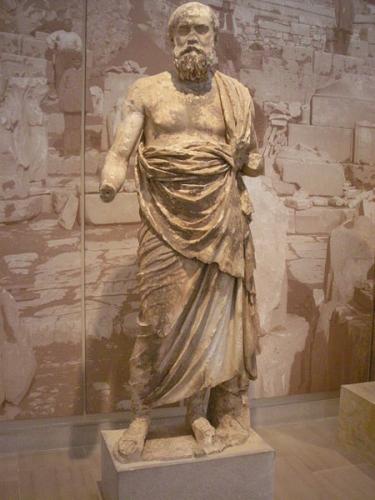Herbert’s later editions had lots of ‘scholarly’ additions (as well as the occasional poem). Following on what he described as his “poore [sic] reading”[1] Herbert started referencing other – and especially classical – authors[2].
This approach was shared by many Europeans: Pietro della Valle, for example, did the same. Although this has been described as helping to situate the work in a “familiar context” – and acts in a very similar way to the Quranic and pre-Islamic references noted in the Persian narratives above – it was rarely done in unpublished letters or diaries[3]. This suggests that the allusions were not familiar enough to spring to mind as authors were travelling.
Brentjes has compared Herbert’s published writings[4] with the (unpublished until 1935) diary of another member of the Dodmore Cotton embassy, Robert Stodart[5] – focusing specifically on the journey between Tabriz, Qazvin and Damavand. Here, Herbert presents an “impossible itinerary” to allow him to include more background[6]. Unfortunately, however, his “general geography of Iran is wrong more often than not, and his historical descriptions are accurate only in the sense of being correctly summarized from earlier sources”[7].
There are gaps in Stodart’s diary for Isfahan[8], but the section that remains is all about feasts, and invitations to and from members of the English and Armenian communities[9]. As in the accounts of the Sherley party, the maydan and the other monuments presented by Herbert are not even mentioned by Stodart.
Herbert added other empirical ‘truths’ to his later books – or at least attempted to[10]. He critically discussed his own sources and, like any good scholar might, he even apologised for some of his methodological shortcomings[11].
It is difficult to be certain what proportion of the changes in Herbert’s successive editions were about a developing “erudition” and more systematic approach to knowledge[12] – he was, after all only twenty-two years old when he left for Persia – and which simply reflected market pressures to re-package, and perhaps spice up, old material.
As well as being one of the first to see and write about the maydan, Herbert was also one of the first to refer to the accounts of other contemporary travellers. It had not yet become usual to “assimilat[e] without acknowledgement”[13] and, in his later editions, Herbert (at least obliquely) cited Figueroa. Although Herbert – like many others later[14] – challenged the ‘facts’ presented by other authors[15], all of the travellers bolstered their own accounts not only by explicitly “repeat[ing] phrases and scholarly questions” but also by using the same “more hidden subconscious concepts and assumptions”[16].
[1] TH 1638, 153. He eventually referred to Plutarch, Sedelius, the prophet Jeremiah, Don Garcia (Figueroa), Niger (presumably the Roman Emperor), Ptolemy, Justin, Apollodorus, Polybius, Pliny, Strabo, Diodorus, Ben Jonas, Cluverius, ‘The Arabian Geographer’ (whoever that was), Joseph Barbarus, Rabbi Benjamin, Contarenus, Lemius, Cartwright and, of course, the influential ‘Mandeville’ (whose works are now recognised as a mix of plagiarism and fantasy): TH 1665, 168-70.
[2] Herbert did include a few references in the 1634 edition: TH 1634, 82-4. By 1638 there were many more: TH 1638, 153-55
[3] Brentjes,“Immediacy, Mediation, and Media”, 181
[4] Brentjes is using a 1971 facsimile of the 1634 edition.
[5] Edward Denison Ross, The journal of Robert Stodart; being an account of his experiences as a member of Sir Dodmore Cotton’s mission in Persia in 1628-29. London: Luzac & Co., 1935.
[6] Brentjes,“Immediacy, Mediation, and Media”, 182
[7] Brentjes,“Immediacy, Mediation, and Media”, 185
[8] Stodart set off from London Custom House on 16th April 1626 at 3pm. Then there’s a gap in the journal until 1628: “This daye we came from Hispahone [Ispahan], being the last day of Aprill”. Denison Ross, The journal of Robert Stodart, 44-45.
[9] Denison Ross, The journal of Robert Stodart, 67-71.
[10] For example, he laboriously computed latitudes (using Ptolemy); studiously considered nine different spellings for Isfahan; and gave Hijri as well as Gregorian dates TH 1638, 154.
[11] For example, on measuring the famous tower of skulls in Isfahan, “at the base is twenty foot around, and threescore high, or thereabouts; for the truth is, I forgot to measure it”. TH 1665, 175.
[12] John Butler, “Herbert, Thomas (2)”.
[13] Matthee, “The Safavids under Western Eyes,”148
[14] For example, Kaempfer was criticised by Le Brun for his inaccuracies in drawing Persepolis (in C. de Bruyn, Voyages de Corneille Le Brun par la Moscovie, en Perse, et aux Indes Orientales. Et quelques remarques contre Mrs. Chardin & Kempfer. Avec une lettre écrite à l’auteur, sur ce sujet … Amsterdam, Freres Wetstein, 1718) but himself criticised Olearius and Tavernier: his manuscripts include several folios of Errores Tavernierani (MS Sloane 2920 fol 118-33, fol 41-45).
[15] For example, Herbert gives Isfahan’s elevation as 32’29” and describes this as “differing a little from Don Garcias accompt, whose height exceedeth not 31’30”. TH 1665, 168.
[16] Lindsay Allen,“Chilminar olim Persepolis”, 325.
